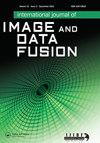一种基于区域的多车道检测迭代种子方法
IF 1.3
Q3 REMOTE SENSING
International Journal of Image and Data Fusion
Pub Date : 2020-01-02
DOI:10.1080/19479832.2019.1683623
引用次数: 3
摘要
摘要全球大多数汽车公司都致力于通过开发高级驾驶员辅助系统(ADAS)和自动驾驶汽车来减少事故。车道检测对于自动驾驶和ADAS都至关重要,因为车辆必须沿着车道行驶。由于道路条件的变化,车道的检测非常具有挑战性。几十年来,车道检测一直吸引着计算机视觉界的注意。从本质上讲,车道检测是一个多特征检测问题,已成为计算机视觉和机器学习技术的一个真正挑战。本文提出了一种基于区域分割的迭代种子多车道检测方法。这里,多车道的检测是在分割之后进行的,这是高效的,并且提高了计算速度。在所提出的基于区域的分割方法中,在将输入图像分割成网格后,通过选择目标网格来从道路中分割车道。然后,基于距离测量,通过迭代程序选择最优线段。使用检测准确度、灵敏度和特异性来评估所提出的基于区域的迭代种子方法的性能,其中该方法的最大检测准确率为98.89%。本文章由计算机程序翻译,如有差异,请以英文原文为准。
A novel region-based iterative seed method for the detection of multiple lanes
ABSTRACT Most of the global automotive companies have been paid great efforts for reducing the accidents by developing an Advanced Driver Assistance System (ADAS) as well as autonomous vehicles. Lane detection is essential for both autonomous driving and ADAS because the vehicles must follow the lane. Detection of the lane is very challenging because of the varying road conditions. Lane detection has attracted the attention of the computer vision community for several decades. Essentially, lane detection is a multi-feature detection problem that has become a real challenge for computer vision and machine learning techniques. This paper presents a region-based segmentation based on iterative seed method for multi-lane detection. Here, the detection of multi-lanes is done after the segmentation, which is highly efficient and improves the computing speed. In the proposed region-based segmentation method, the segmentation of lanes from the roads is carried out by selecting the target grids, after partitioning the input image into grids. Then, based on the distance measure, the optimal segments are chosen by an iterative procedure. The performance of the proposed region-based iterative seed method is evaluated using detection accuracy, sensitivity, and specificity, where it has the maximum detection accuracy of 98.89%.
求助全文
通过发布文献求助,成功后即可免费获取论文全文。
去求助
来源期刊

International Journal of Image and Data Fusion
REMOTE SENSING-
CiteScore
5.00
自引率
0.00%
发文量
10
期刊介绍:
International Journal of Image and Data Fusion provides a single source of information for all aspects of image and data fusion methodologies, developments, techniques and applications. Image and data fusion techniques are important for combining the many sources of satellite, airborne and ground based imaging systems, and integrating these with other related data sets for enhanced information extraction and decision making. Image and data fusion aims at the integration of multi-sensor, multi-temporal, multi-resolution and multi-platform image data, together with geospatial data, GIS, in-situ, and other statistical data sets for improved information extraction, as well as to increase the reliability of the information. This leads to more accurate information that provides for robust operational performance, i.e. increased confidence, reduced ambiguity and improved classification enabling evidence based management. The journal welcomes original research papers, review papers, shorter letters, technical articles, book reviews and conference reports in all areas of image and data fusion including, but not limited to, the following aspects and topics: • Automatic registration/geometric aspects of fusing images with different spatial, spectral, temporal resolutions; phase information; or acquired in different modes • Pixel, feature and decision level fusion algorithms and methodologies • Data Assimilation: fusing data with models • Multi-source classification and information extraction • Integration of satellite, airborne and terrestrial sensor systems • Fusing temporal data sets for change detection studies (e.g. for Land Cover/Land Use Change studies) • Image and data mining from multi-platform, multi-source, multi-scale, multi-temporal data sets (e.g. geometric information, topological information, statistical information, etc.).
 求助内容:
求助内容: 应助结果提醒方式:
应助结果提醒方式:


